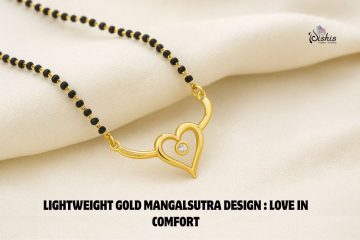When shopping for silver jewellery, many people encounter the terms called Sterling Silver 925 Silver, and wonder what makes them different. Well, very few of us know the difference between them; these terms actually refer to the same thing. Understanding connections, along with the broad World of silver Jewellery, can help make better purchasing decisions and avoid common misconceptions.
Sterling silver and 925 Silver: The major difference

Sterling silver and 925 Silver represent the metal composition. Both terms describe the silver that contains 92.5% pure silver mixed with 7.5% of other metals, typically copper. The number 925 directly refers to this percentage: 925 parts 1000 hours, pure silver.
The standardised competition has been used for centuries because pure silver, while beautiful, is too soft for jewellery making. The added metals, usually copper, create durability while maintaining the Luster appearance that makes silver so desirable.
Why Different Names for the Same Thing?
The term sterling silver has historical roots, dating back to medieval England, where it became the standard, fossil currency, and later expanded to jewellery and decorative items. The 925 designation has immense more as a precise, numerical way to describe the same composition, particularly useful in international trade and manufacturing.
Today, both terms appear on jewellery marking, with 925 being more common due to its universal recognition across different languages and cultures. Reputable Jewellers like Dishi’s Designer Jewels use these terms interchangeably because they describe identical metal compositions.
Understanding Silver Purity Levels
Silver comes in various purity levels, each suited for different purposes:
Fine Silver: It represents the highest purity level available commercially. While beautiful, this silver is extremely soft and easily damaged, making it unsuitable for everyday jewellery. Find Silver Works Best for decorative items on special occasions, pieces that won’t receive heavy wear.
Sterling Silver: It strikes the perfect balance between purity and durability. This composition provides the classic silver appearance while offering enough strength for wings, necklaces, bracelets, and earrings that can withstand daily use.
Coin Silver: It contains slightly less silver than sterling and was historically used for currency. Today, it is less common in jewellery, but still appears in some vintage or specialty pieces.
Silver-plated items: The feature is a thin layer of silver over a base metal core. While affordable, these pieces were over time as the silver coating gradually disappeared with use.
How to identify authentic Sterling silver?
Authentic Sterling silver 925 silver carries a specific marking that helps verify its quality

Hallmark and Stamps: Appear as a small impression on the metal, usually in inconspicuous locations. Look for 925, S925, Sterling, or STER marking. These stamps indicate the manufacturer’s guarantee of silver content.
Weight and Feel: It provides an additional clue about authenticity. Sterling silver has substantial weight compared to silver-plated alternatives. The metal should feel substantial when held.
Tarnish Patterns: It can indicate authenticity. Real Sterling, silver develops unnatural, Patna, over time, typically appearing as a slight darkening or rainbow-like colouration. This tarnishing occurs because of the copper content reacting with air and sulphur compounds.
Magnet Test: It offers a simple verification method. Sterling silver is not magnetic, so genuine pieces won’t stick to magnets. However, this test is not foolproof. Since many other non-magnetic metals exist.
A common misconception is about silver quality
Many people believe that 925 is somehow inferior to sterling silver, but this is actually a misconception from not understanding that they are identical. Something the numerical designation indicates lower quality, when it actually provides more precise information about the metal’s composition.
Another misunderstanding involves thinking that a higher percentage always means better quality. While fine silver contains more silver, its softness makes it particle for most jewellery applications. Sterling silver 92.5% composition actually represents the optimal balance for beautiful, durable jewellery.
Caring for Sterling silver and 925 silver jewellery
Since sterling silver and 925 silver are identical, they require the same care. Methods:
- Regular cleaning helps maintain the metal shine. Use a soft cloth to gently polish pieces after wearing. For deep cleaning, mild soak and warm water work effectively, followed by thorough drying.
- Proper storage prevents tarnishing and scratches. Keep pieces in individual pouches or compartments within jewellery boxes. Aunty tarnish strips or clothes can slow the oxidation process that causes darkening.
- Avoiding harsh chemicals: it protects the metal surface. Remove silver jewellery before swimming in chlorinated pools, using cleaning products, or applying lotion and perfumes.
Conclusion
The difference between Sterling silver and 925 silver is simple: there is one. These terms describe the same quality composition that satisfied every jewellery lover for centuries. Understanding this fact helps avoid confusion and makes shopping easier for those who are choosing pure silver.
The next time someone asks you about the difference between these metals. The answer is now very clear. They are talking about the same wonderful metal that continues to be a favourite choice for quality Jewellery around the world. If you are looking for silver jewellery, then Dishi Designer Jewels is a stop solution for you.



0 Comments